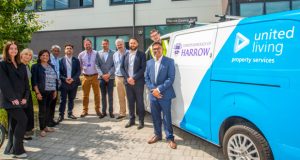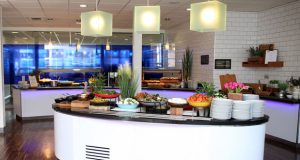National guidance has been published by standards body, BSI, for building designers and planners to consider accessibility for a neurodiverse population.
Building designers and public planners have long been responsible for ensuring that the built environment is accessible to people with physical disabilities but, until now, the needs of neurodivergent people and people with sensory and/or information processing differences have not received the same level of attention. In recognition of this, and in light of a research study which explored how neurodivergent people experience the built environment, BSI, has launched first-of-its-kind-standard on the design of the built environment for a neurodiverse society.
Neurodivergence includes people with autism, ADHD, dementia, and a range of other sensory and/or information processing differences. It is estimated that around one in seven people in the UK are neurodivergent in some form. The guidance from BSI contained within the new standard, PAS 6463, applies to buildings and external spaces for public and commercial use, as well as residential accommodation for independent or supported living.
A significant number of people find elements of the built environment uncomfortable, distressing or a barrier to their use. For example, when interacting with the built environment, neurodivergent and neurodegenerative people can frequently experience “sensory overload”, overstimulation of the body’s senses leading to a feeling of being overwhelmed. The increased demand on an individual of the associated cognitive load can unsurprisingly lead to increased anxiety, fatigue and, in some cases, poor mental health. PAS 6463, Design for the mind – Neurodiversity and the built environment – Guide aims to assist building designers in mitigating and eliminating these negative impacts.
Scott Steedman, Director-General, Standards at BSI, said: “Everyone deserves to experience the built environment in a way that supports their general wellbeing and generates better health outcomes. The new guidance within PAS 6463 fills a gap in design practice by addressing the needs of people whose minds process information and experiences differently, extending the benefit of inclusive design to a new and important community. With PAS 6463, designers can now benefit from guidance on lighting, décor, acoustics, and layout to support neurodiverse users of buildings and infrastructure.”
Jean Hewitt, a senior member of the inclusive design team at Buro Happold and technical author of the PAS, added: “In addition to designing places to accommodate our diversity in form, size and physical ability, there is also a profound need to design for neurological difference. Since my first involvement in this area in 2009, I have hoped for some progress for the many neurodivergent colleagues, friends, and family whose lives are unnecessarily blighted by places that don’t work for them. Some have a formal diagnosis, but many do not; there are also many neurotypical people more mildly but regularly affected by environments on a day-to-day basis, perhaps triggering unsteadiness, migraines or experiencing extra daily stress through elements that are not intuitive or comfortable for them.
“My learning throughout the process of developing this PAS leads me to believe at least 30 per cent of the population are negatively impacted by elements that could so easily be adjusted or eliminated during design, procurement, and management without any cost implications. This PAS is an opportunity to ask everyone involved in the built environment to carefully consider this normal neurological diversity of humans rather than just meeting basic regulatory demands – places should be comfortable for everyone to visit and use without encountering emotional distress or difficulty. I’m very excited to have been involved in developing this guidance to help make this the case for many more people.”
PAS 6463, Design for the mind – Neurodiversity and the built environment – Guide can be downloaded here.
Providing a safe, secure and compliant workplace is a key goal for many facilities managers today, coping with multiple regulations, strict data protection rules and new hybrid working practices is a challenge that can’t be ignored. But how do you achieve this across multiple sites and still control costs, reduce bottlenecks and manage the flow of visitors to your facility?
Pitney Bowes, a global technology company that provides commerce solutions in the areas of ecommerce, shipping, mailing and financial services has created a survey to find out how you’re managing these challenges today and how you are preparing for the future.
Please share your experiences and opinions on a safe, secure and compliant workplace by filling in this short survey. It will take just five minutes to complete and offers the chance to win a £150 Amazon gift card.
To take part in the survey click here.





